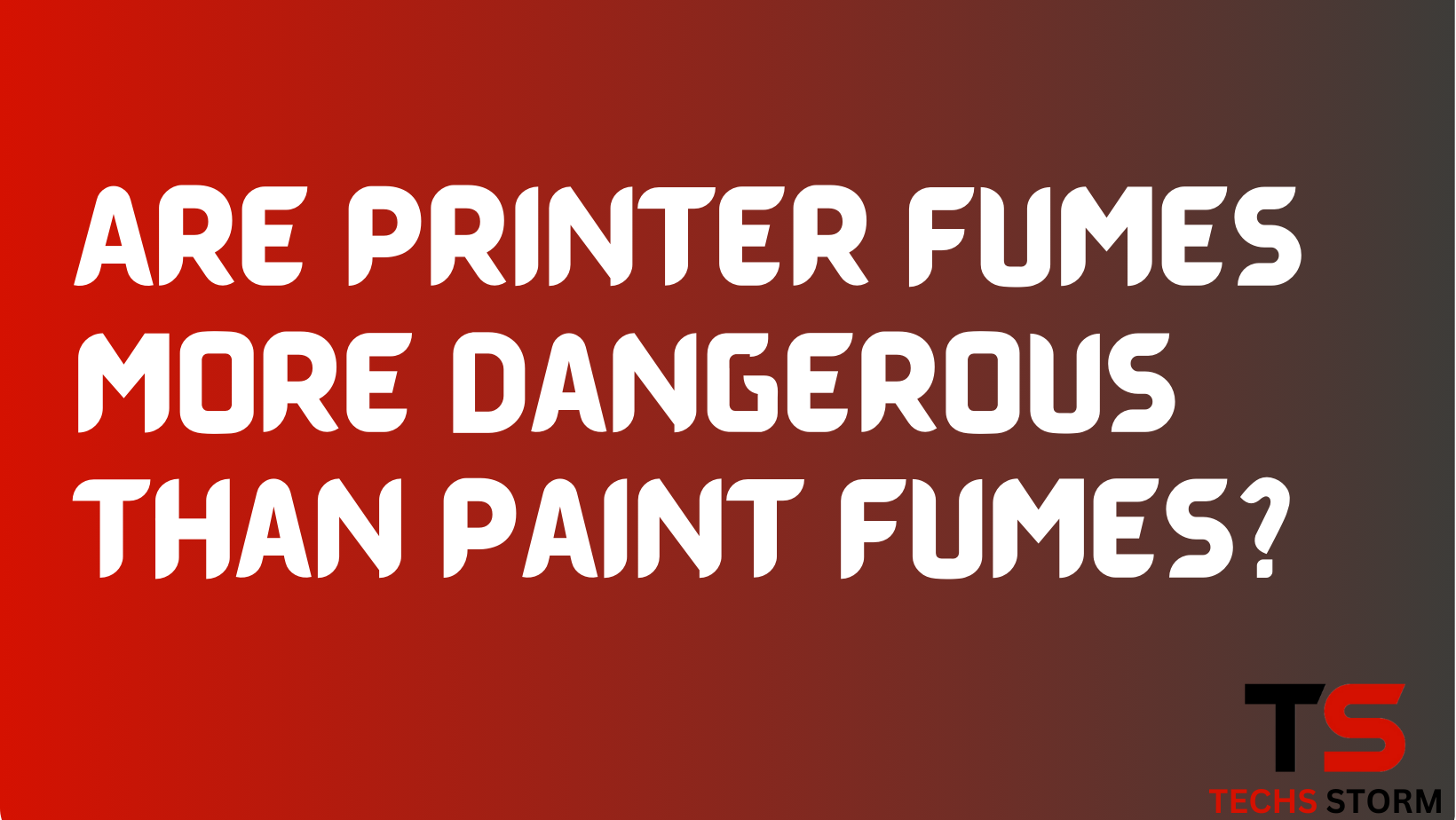Introduction
Indoor air quality is something most people overlook, yet it plays a crucial role in our daily health. Whether you’re printing documents at home or painting a room, both activities release airborne chemicals that can impact your well-being. Printer fumes and paint fumes contain volatile organic compounds (VOCs) and other particles that may cause short-term and long-term health effects. But which one poses a greater risk? Are the emissions from your office printer worse than those from freshly painted walls? In this article, we’ll compare the potential dangers of printer and paint fumes, breaking down their sources, health risks, and how to minimize exposure.
Understanding Printer Fumes
Sources of Printer Fumes
Printer emissions primarily come from laser and inkjet printers, but laser printers are the bigger concern. These devices use toner, which contains fine particles of carbon, polymers, and pigments. When the printer operates, the toner is heated, releasing microscopic particulates and trace amounts of VOCs. Additionally, laser printers generate small amounts of ozone, a gas that can irritate the respiratory system.
Inkjet printers, on the other hand, don’t use toner but still release minimal VOCs from liquid ink evaporation. While their emissions are significantly lower than laser printers, they can still contribute to indoor air pollution over time, especially in poorly ventilated spaces.
Health Effects of Printer Fumes
Short-term exposure to printer fumes may cause mild irritation, including watery eyes, sore throat, or headaches. In environments where printers run continuously, such as offices, prolonged inhalation of fine particles can lead to respiratory discomfort or exacerbate conditions like asthma.
The long-term impact of exposure is less studied, but research suggests that fine particles from toner can penetrate deep into the lungs, potentially leading to chronic respiratory issues. Some studies have also explored the link between workplace printer exposure and cardiovascular effects, although more research is needed to establish definitive risks.
Understanding Paint Fumes
Sources of Paint Fumes
Paint fumes mainly originate from VOCs present in oil-based paints and some conventional latex paints. VOCs are carbon-based chemicals that easily evaporate at room temperature, producing a strong odor. Common VOCs in paint include formaldehyde, benzene, and toluene—substances known for their potential toxicity.
While oil-based paints contain higher levels of VOCs, water-based or low-VOC paints have gained popularity as a safer alternative. However, even low-VOC paints still release some emissions, although in much lower concentrations.
Health Effects of Paint Fumes
Breathing in paint fumes for a short duration can cause dizziness, headaches, and nausea. The strong chemical odor can also irritate the eyes and throat. Some people may develop mild allergic reactions, such as skin irritation or breathing difficulties.
Prolonged exposure, especially in poorly ventilated areas, may increase the risk of more serious health effects. Studies suggest that repeated inhalation of high levels of VOCs from paint may contribute to nervous system damage or organ toxicity. Pregnant women and individuals with pre-existing conditions should take extra precautions when exposed to strong paint fumes.
Comparing the Dangers
Toxicity Levels
When comparing the chemical composition of printer and paint fumes, paint releases a higher concentration of VOCs, which are directly linked to health concerns. Printer emissions, while not as intense, include fine particulate matter that can still pose risks over long-term exposure.
Exposure Duration
Printer fumes are typically a low but constant source of emissions, especially in offices or home setups where printing occurs daily. Paint fumes, on the other hand, are temporary but intense—strongest during application and the drying process, but dissipating after a few days with proper ventilation.
Ventilation & Safety Precautions
Both printer and paint fumes can be managed with good ventilation. Printers should be placed in well-aired rooms or near an open window, and frequent printing should be minimized. When painting, using exhaust fans, wearing protective masks, and choosing low-VOC paints can significantly reduce exposure risks.
Safety Measures & Recommendations
Reducing Printer Fumes
To minimize exposure to printer fumes, keep printers in well-ventilated spaces rather than enclosed rooms. If you print frequently, consider using models with low-emission certification. Regular maintenance, including replacing filters and cleaning the printer, can also help reduce airborne particles. Additionally, standing away from the printer while it operates can limit direct inhalation of emissions.
Reducing Paint Fumes
When painting indoors, ensure proper ventilation by opening windows and using fans. Opt for low-VOC or zero-VOC paints, which emit fewer harmful chemicals. Wearing a respirator mask can provide added protection, especially if working in a confined space. If possible, allow freshly painted areas to air out for several days before prolonged occupancy.
Conclusion
Both printer and paint fumes carry potential health risks, but their impact depends on exposure levels and ventilation. Paint fumes release higher concentrations of VOCs, making them more immediately harmful, while printer fumes can contribute to long-term indoor air pollution. The key to minimizing risks lies in proper ventilation and choosing safer alternatives. Whether you’re printing daily or painting occasionally, taking simple precautions can go a long way in maintaining healthy indoor air quality.








